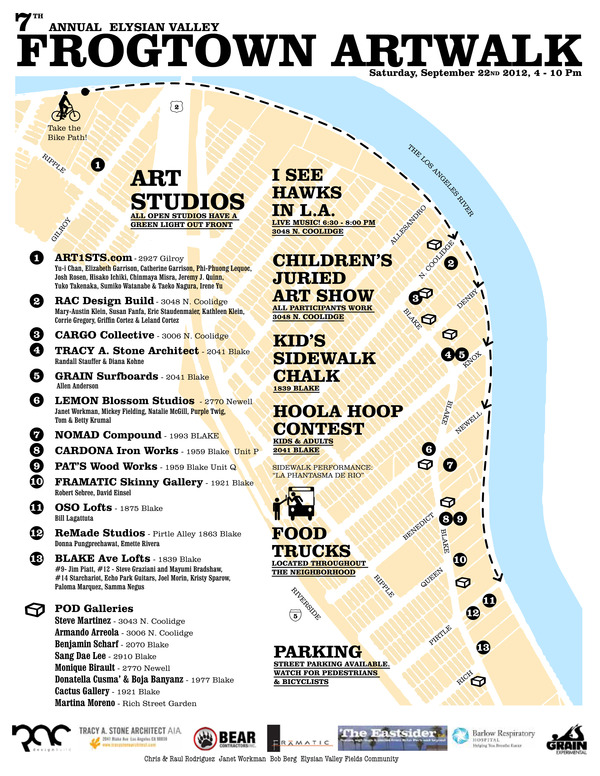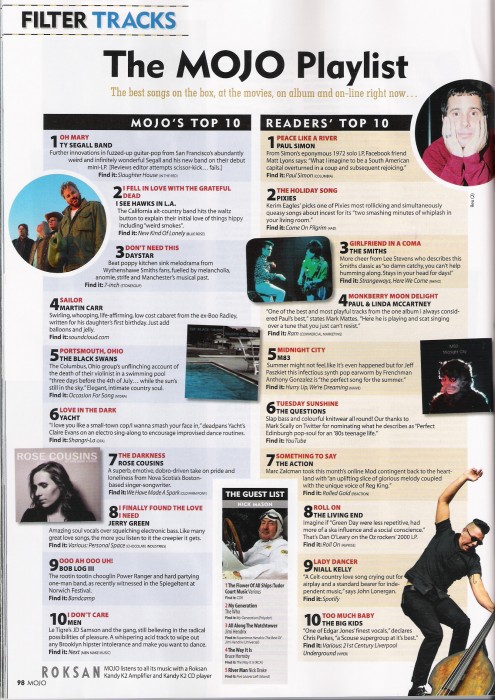It’s November 2 in the last year of the Mayan calendar and therefore the last November 2 we’ll ever experience. So we’ve got to make it count. Like every day between now and the end of time (12/21/12), we’re going to live it to the fullest.
And what’s better than piling into the gracefully aging Yukon, with its non-opening doors, its tailgate that only Rob can open by summoning his dad’s surgeon skills to manipulate unseen levers inside the pried open plastic panel, its oil sipping engine and brakes that need to be woken from a deep chronic slumber. There’s nothing better, that’s what.
The Ireland/UK crew of Rob, Paul, Victoria and Doten (as Marc Doten is most affectionately known) always have a good time, even in trying situations. Whatta ya got, road? We’re ready for it. And the road this time out is mellow, a dry fall day with very dry brown hills as we 210 it to the 5, 46 it to the 101, and then–a break in the routine.
We’re playing in Carmel Valley, inland from the magic and expensive Carmel coast. New territory. Google maps says drive to Salinas and backtrack, but there’s an intriguing back road out of Greenfield. We take it. Through the small farmworker truck with shiny pickup trucks, west through fields towards soft old mountains that guard the coast. The narrow road leads into a long narrow river valley with high narrow mesas packed to the edges with vineyards blazing fall yellow in the low sun. Sedimentary rock beds turned straight verticle, one lane iron bridges, mysterious oak stands, infiltrated with cottonwoods and sycamores as we wind up and closer to the summit and lush coastal moistness. Thirty seven miles of forgotten California, and we pray for its continued obscurity. It’s nice to know the hills the Indios roamed are still untamed.
We spy squatting on a power line a hawk so huge that we stop and gawk. Oh, no, thinks the hawk, another eco tourist gawking vehicle, and lumbers off the line and out over the steep valley walls. Bigger houses and shiny new cars start to appear in the shadows of trees. We’re within commuter distance of Carmel and Monterey. We roll up a last rise into Carmel Valley, the town, nestled in oak covered hills. Olive oil, wineries, money.
At five p.m., uncharacteristically right on time, we reach Plaza Linda, a low brow high end Mexican restaurant. And there’s Paul’s mom Teresa, just driven down from Capitola and ready to rock. Sound check, large meal, the locals and some long traveling Hawks fans settle into tables, and we rock acoustically through a single PA speaker. It’s good. We’ve retained our tour tightness, and the crowd loves it. Kiki Wow, our host and music queen of these valleys and hills, arrives, introduces our second set, and this one’s good, too. We hang with friands (friend fans), sign CDs, talk over a return with Kiki, and hit the road. Paul and Victoria drive back with Mom Lacques up the coast to Capitola, and Rob and Marc motor out to the coast and a bit south, caravanning behind Matt, a Hawks fan and ranger who’s hosting the Hawks at his cabin on Point Lobos State Park land.
Matt’s cabin is offroad, up a winding dirt road over soft earth skirting unseen cliffs, the sound of surf pounding faintly far below. The caravan pulls up to the cabin in pitch blackness. Matt leads Marc and Rob, not into the cabin, but down a narrow trail through towering trees. Marc and Rob can’t see a thing. Follow your heart vision, advises Matt, and they gamely stumble forward. Matt stops abruptly on a wind whipped cliff’s edge. Jump, he commands. Marc and Rob stand frozen. Gotta jump, says, Matt, and he pushes Marc and Rob off the cliff. They plunge blindly downward, tumbling, a scream trapped into their throats. Whap! They hit ice cold Pacific Ocean, claw desperately to the surface, only to be pummeled by a series of small, unseen waves. Matt laughs, faintly audible up on the cliff’s edge. Two glowing orbs float on what might be rocky shore. Marc and Rob swim towards them, choosing unknown something over unseen nothingness. They clamber, stiff limbed and shivering, onto big flat rocks. The orbs belong to a black bear, who attacks. Rob and Marc tag team the bear, wrestling for their lives. Rob picks up a big flat rock, smashing it down on the bear’s skull. The bear lurches sideways, collapses to the ground, breathing heavily. Down, but not for long.
It’s November 3. Only 48 days till the end of the world. Live, people, live! Victoria and Paul and Mom grab breakfast at Linda’s, an in demand Santa Cruz breakfast joint filled with hippies of indeterminate age and provenance, and the food is damn good. Coffee at Coffeetopia, Paul’s Mom catches us up on the latest Santa Cruz county corruption scandals and plans for overdevelopment, business as usual. Meet the Yukon back at Mom’s house, and we’re on the road, 1 north to 17 and perhaps the 880 to 580 perhaps, heavy traffic that Northern Californians deny that they wallow in al la their neighbors to the south, and finally we’re free of Bayarea commutation and into the Central Valley.
The Palms Playhouse in Winters is our next stop. Old friends Kate and Dave are there when we arrive, Richie and Katie too. We do a sound check with new friend and soundman Warren. Then it’s off to a quick dinner before the gig. Paul’s sister Madeline and her ultra cool husband Joaquin join us, tell us tails of their son Gabriel and his girlfriend Andrea, who are on a WOOF tour of Latin America that’s turned into a true epic wandering, gone over a year and now in Colombia. We hope they write a book when they get back. Madeline and Joaquin are flying to meet the errant young ‘uns in Ecuador.
The show goes quite beautifully, Richie adding ever more masterful accordion, singing his own Sorrow Be Gone with wife Katie coming up to share vocals. Marc’s vocals add to a new seamless blend now, with our 23 show overseas rehearsal paying off again. Doten wows the smallish but very enthused crowd with his version of “Into The Mystic.” Victoria’s rock of the world snare is nicely cranked in the monitors. We do a couple of encores, fond farewell to Dave and Kate of the Palms, farewell, sis, and head back to Richie and Katie’s in Sacramento for our customary midnight scotch and cheese tasting.
Next morning we take care of priorities, head straight out, groggy and a bit whiskey soaked, through the flat streets of Sacto to a groovy coffee house, animated discussions of solar panels, backyard gardening and how to fight the massive development that will abut the charming 1900’s neighborhood. And we’re off. Farewell, kind Sacto tribe. We power south on the 99, take the intriguing Highway 41 at Fresno that angles due south to the 5, no time saved but a fascinating cross section view of some smaller farms and signs of rural America collapse. The ups and downs of unlimited backyard space. Do Europeans exhibit their abandoned trucks and backhoes?
Sunset. Nightfall. We’re back in Highland Park. That was a good one.

